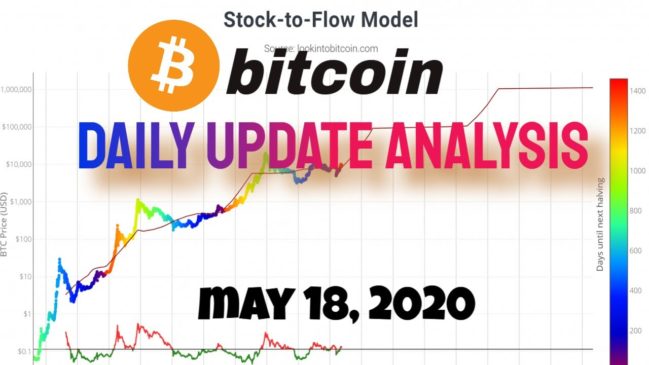
▶ Coinbase Website: Coinbase.com
▶ CEX Website: cex.io
#Bitcoin #BitcoinTrading #BitcoinAnalysis #Crypto #Cryptocurrency #Altcoins #Blockchain
For daily BTC chart updates, please join my FREE Telegram Chat:
Support CryptoBull News Channel
1. Join Coinbase earn $10 FREE BTC –
2. Join Binance –
3. Download Brave for FREE!
Donations are not necessary but greatly appreciated!
Bitcoin: 3NFRmMUzxRGuBJkkQC9RtE8afMKTAmCuww
Ethereum: 0xdd137394bec058cd4dC63074622a51C7752E7082
Litecoin: MGDfj2CjMUcyBW9NhsuzvZgap5m1sgTtge
Bitcoin Cash: qqmf6p7j5shuanewxzx4qqdhgpmusefasu75hl7eq6
What is BitcoinStock-to-Flow Model?
Stock-to-flow measures the issuance of new Bitcoins each block against Bitcoin’s existing supply, a method which has proven highly accurate in charting price performance.
Indicator Overview
This model treats Bitcoin as being comparable to commodities such as gold, silver or platinum. These are known as ‘store of value’ commodities because they retain value over long time frames due to their relative scarcity. It is difficult to significantly increase their supply i.e. the process of searching for gold and then mining it is expensive and takes time. Bitcoin is similar because it is also scarce. In fact, it is the first-ever scarce digital object to exist. There are a limited number of coins in existence and it will take a lot of electricity and computing effort to mine the 3 million outstanding coins still to be mined, therefore the supply rate is consistently low.
Stock-to-flow ratios are used to evaluate the current stock of a commodity (total amount currently available) against the flow of new production (amount mined that specific year).
For store of value (SoV) commodities like gold, platinum, or silver, a high ratio indicates that they are mostly not consumed in industrial applications. Instead, the majority is stored as a monetary hedge, thus driving up the stock-to-flow ratio.
A higher ratio indicates that the commodity is increasingly scarce – and therefore more valuable as a store of value.
How To View The Chart
On the above chart, price is overlaid on top of the stock-to-flow ratio line. We can see that price has continued to follow the stock-to-flow of Bitcoin over time. The theory, therefore, suggests that we can project where price may go by observing the projected stock-to-flow line, which can be calculated as we know the approximate mining schedule of future Bitcoin mining.
The colored dots on the price line of this chart show the number of days until the next Bitcoin halving (sometimes called ‘halvening’) event. This is an event where the reward for mining new blocks is halved, meaning miners receive 50% fewer bitcoins for verifying transactions. Bitcoin halvings are scheduled to occur every 210,000 blocks – roughly every four years – until the maximum supply of 21 million bitcoins has been generated by the network. That makes stock-to-flow ratio (scarcity) higher so in theory price should go up. This has held true previously in Bitcoin’s history.
The stock-to-flow line on this chart incorporates a 365-day average into the model to smooth out the changes caused in the market by the halving events.
In addition to the main stock-to-flow chart, I have created a divergence chart (lower section of the chart) which shows the difference between price and stock-to-flow. When price moves above stock-to-flow (divergence line turns from green to red), thereby allowing us to easily see how price interacts with stock-to-flow through market cycles over time.
DISCLAIMER: I’m NOT a financial advisor. This is NOT Financial Advice!!! The content on this channel is solely based on my opinion and is meant for educational and entertainment purposes only. The cryptocurrency market is an extremely volatile space. Please do your own due diligence before investing or trading cryptocurrencies.
▶ Coinbase Website: Coinbase.com
▶ CEX Website: cex.io
Youtube version




